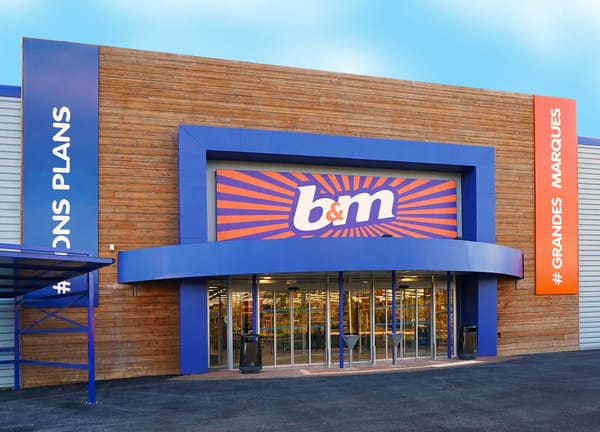How my dividend investing system works

Last updated: 28/01/2024
Last week, I introduced my dividend income system and explained why I've adopted a systematic approach to investing for my personal portfolio.
In this piece I'm going to discuss the criteria I use to select stocks. I'll also provide an overview of how I incorporate these into an overall scoring system.
Disclaimer: My commentary reflects my own opinions and investment activity, as they relate to my personal share portfolio. My views do not represent advice or recommendations and are not intended to be a substitute for personal research or qualified financial advice.
I do not provide share tips and I am not a financial adviser. The investing approach I discuss is my personal approach and is not intended to be suitable for others to follow.
Update November 2022: I recently recorded a podcast discussing my approach to dividend investing for the Fund Your Retirement platform.
The podcast was recorded on 21 September 2022. You can listen on YouTube ) or through all of the usual podcast platforms. I hope you enjoy it!
How I got here
When I started investing for income, I focused on metrics such as dividend yield, P/E, and earnings cover. But I found that these were inadequate indicators of dividend quality. By this, I mean dividend safety and dividend growth potential.
I realised that some stocks offer high yields because they have little else to offer investors except slow-motion value destruction and - eventually - a dividend cut.
Influenced by the work of Terry Smith and others, I became convinced that if I wanted my income portfolio to have a chance of beating the market, I needed to place a greater emphasis on quality metrics. As a result, I started to place more weight on measures such as return on capital employed and free cash flow.
Not all of the shares which score highly in my system offer high yields. But the overall yield from my portfolio is quite satisfactory, in my view, at just under 5%. To put this in context, the current yield from the FTSE 100 is 3.4%.
Over time, I hope that the low-yielding stocks in the portfolio will deliver stronger dividend growth than the high yielders. My ambition is that the overall dividend yield on cost of my portfolio will steadily increase.
What stocks am I buying?
To populate my screen, I need to define an investable universe of stocks. The criteria I use are broad and fairly simple:
- Primary UK listing
- Market cap of at least £25m
- At least five years of consecutive dividend payments
- Expected to pay a dividend for the current year
These criteria mean that my universe includes most of the FTSE All-Share index and a fair number of AIM stocks. I'm happy with that. I'm keen to combine the growth potential of quality small caps and the high yields on offer from larger businesses.
Selling: as a private investor with a long-term view, I can afford to take a relaxed view on liquidity. My approach does not require knee-jerk trading and I don't need to be able to liquidate large positions at short notice. I rarely buy or sell shares, except after careful deliberation.
In particular, I do not sell due to share price moves and market uncertainty alone – in general, I wait for new information to be provided by a company before I consider whether to take any action about a troubled position.
In practice, I find that sometimes my approach helps me to avoid an unnecessary loss. On other occasions, unfortunately, it means that the eventual loss is bigger than it might have been if I'd sold at the first hint of trouble.
As always, I think the important thing is for investors to define their own strategy that they understand are comfortable following.
On balance, I find this approach works for me. But I know many other successful investors who take different approaches.
My screening rules
The approach I took when developing my system was to define the characteristics I was looking for in a good quality dividend. I then worked backwards to identify the financial metrics from which these characteristics might be derived.
Here's an overview of the factors I look for.
Dividend culture: Does the company have a track record of unbroken dividend payments? To qualify for my screen, I require a minimum of five consecutive years of payouts. Longer dividend streaks attract a higher score.
Dividend safety: How affordable is the payout? In my experience, the most common reasons for a dividend cut are lack of cash flow or earnings cover and excess leverage.
Dividend growth: A dividend that isn't growing may indicate that affordability is stretched, or that the underlying business isn't growing. I may accept a flat payout when the yield is both high and sustainable, but otherwise I want to see dividend growth. To measure dividend growth, I score each stock on historic dividend and free cash flow growth.
Dividend yield: I'm flexible about yield, but it's obviously still important to me. To score a company on yield, I look at the stock's five-year average dividend yield and its forecast dividend yield.
Valuation: I look at valuation in terms of earnings yield and free cash flow yield. Are these yields attractive, and do they support the underlying dividend yield?
Profitability: Terry Smith and Warren Buffett both make an eloquent case for why long-term equity returns are ultimately linked to return on capital employed. There are some good quotes here.
For my screen, I score stocks on return on capital employed and return on equity. I use both trailing 12-month and five-year average figures to give a blended view on profitability.
Fundamental health: This is really about balance sheet health. I use leverage ratios and fixed charge cover to gain an idea of the margin of safety that's available before debt obligations might trigger a dividend cut.
More broadly, I use these metrics as a proxy for the financial health of the business. In my view, a well-run, growing business shouldn't be overleveraged or have any difficulty servicing its debts.
Note: The screening rules described above are applied to non-financial stocks. I use slightly different metrics for financial stocks, but the principles are the same.
The end result
The scores I derive from these screening criteria are weighted and then normalised. I then combine these to generate an overall score for each stock, on a scale of 0-100. I'm then able to filter stocks by sector, providing a diversified shortlist of potential candidates for the portfolio.
My final stock selection process involves an element of subjective judgement and opinion. But that's a story for another day.
I'll finish with an example of how I apply this process to an individual stock – FTSE 100 energy giant Shell, which I reviewed in July 2023:
Disclaimer: This is a personal blog/newsletter and I am not a financial adviser. All content is provided for information and educational purposes only. Nothing I say should be interpreted as investing advice or recommendations.
You should carry out your own research and make your own investing decisions. Investors who are not able to do this should seek qualified financial advice. Reasonable efforts are made to ensure that information provided is correct at the time of publication, but no guarantee is implied or provided. Information can change at any time and past articles are not updated.




